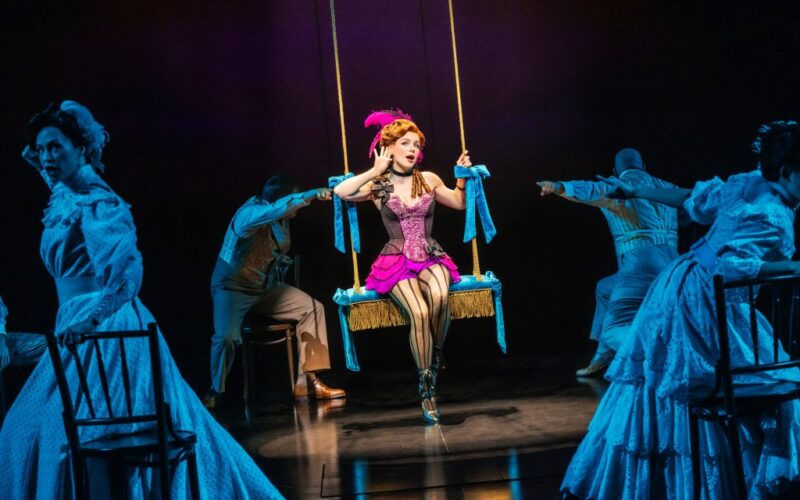The story of churning human collision in and around 1906 New York City, “Ragtime” swept onto Broadway in 1998 fully convinced of its own importance. As Michelle Obama would say years later of “Hamilton,” another show that reminded us immigrants get the job done, “Ragtime” believed itself to be the story of America.
Everyone involved had things to prove. The Canadian producer, Garth Drabinsky, was an outsider willing to drop all kinds of funny money on everything from massive production values to newspaper ads. The director, Frank Galati, wanted to use the novel-to-stage techniques he’d worked on for years in Chicago to prove that a sprawling E. L. Doctorow epic with a three-pronged narrative could become a major Broadway musical. The book writer, Terrence McNally was itching with ambition for the form. And the rising composers, Stephen Flaherty and Lynn Ahrens, wanted to prove they could work on a grander scale in multiple forms: “Ragtime” demanded ragtime but also the music of the shtetl and the plaintive power ballads of a rich white wife, disillusioned in marriage yet stuck helplessly in time and place.
That memorable production had its clunks but nonetheless evoked the great messiness of 1906 America, reminding audiences that change and the crises it brings are a national constant but insisting that the future means progress. But in the end, it was the anthemic score of “Ragtime” that endeared it to so many theatergoers, and that is where the solid new Lincoln Center revival wisely places its focus.
You wouldn’t now call Lear deBessonet’s staging minimalist, even though it began as a City Center gala. But the rolling wheels-of-a-dream metaphor no longer propels the show and deBessonet appears to have made a conscious effort to eschew the bold statements about America in favor of tightening the focus on the little clutch of individuals Doctorow so vividly imagined: a musician, Colehouse Walker, and his love, Sarah: a patriarchal New Rochelle family confused by anything and everything; and an optimistic Jewish immigrant whose belief in the possibilities of his new home is so bulletproof, he wills himself to fame and fortune.
I missed the epic, foundation metaphor of a country in forward motion, especially since there is no clear overarching visual statement in its place. With intentionality, I think, designer David Korins chose a more psychological and expressionistic approach. There’s not much choreography, either. The orchestra is the size of the original (“the largest on Broadway” claims the marketing), but the musicians remain hidden underneath the stage, a tellingly anti-triumphalist decision. The singers, and thus the characters, can’t look for comfort to soaring strings, they just have to believe they have their backs.
Of course, America is now in a very different place from 1998. Go to “Ragtime” and you surely will be struck by just how different, at least in terms of a confidence in our shared future. This “Ragtime” chooses to put something quite different in full view: How Americans invariably have to struggle with individual disappointment and loss.

That’s fair enough. It’s a different time and all of that was always baked into the material. Especially the novel.
Better yet, the new focus plays into the strengths of an empathetic cast that sings the bejesus out of these famous songs. Joshua Henry’s Colehouse feels younger than has been typical, less initially polite, more impassioned and, of course, his voice is the stuff of standing ovations. Nichelle Lewis’ Sarah is more fragile, which makes her crushed optimism especially moving. As Tateh, Brandon Uranowitz focuses on energetic joy. He expands the role and makes it all the more essential to the piece. Both Lewis and Ben Levi Ross, who plays the brooding Mother’s Younger Brother, bring qualities to those two characters I’d never seen before. They are doing the best work of the night; Ross, especially, fleshes out what mostly has been a caricature.

Caissie Levy, whose Mother shares the lead with Henry’s Colehouse, gets the full focus of the Lincoln Center audience as she plants herself center stage and sings the anthemic “Back to Before,” an 11 o’clock number that builds and modulates like crazy, the character going from zero to 70 in five minutes. Levi delivers what you expect from that (as do all of these performers, really) but she also has a quizzical quality, a sense that this Mother does not believe anything will ever work out.
“Ragtime” is generous to all of its characters, not unlike “The Gilded Age,” the TV show with Broadway stars. Its foundational belief in “our children” seems corny today, especially at the end.
But there is still something touching about its conviction that they will have a better life. I mean, Americans look to musicals for hope, don’t we?








